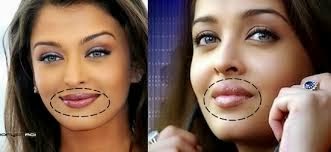DERMAL FILLERS USES, TYPES, SIDE EFFECTS
WHAT DERMAL
FILLERS ARE USED TO FIX
Dermal
fillers can be used to fix a variety of concerns related to facial aging,
including:
·
Adding volume and
smoothing out the deep creases that run from the nose to the mouth (called
nasolabial folds or laugh lines).
 |
| BEFORE |
 |
| AFTER |
Plumping thin lips and
smoothing out vertical lines around the edges of the lips.
·
Augmenting cheeks to
enhance their shape, often restoring youthful fullness.
·
Filling out depressions
(hollows) under the eye area.
 |
| BEFORE |
 |
| AFTER |
·
Making indented scars from
acne or chicken pox more even with surrounding skin.
Reshaping the nose.
 |
| BEFORE |
 |
| AFTER |
HOW DERMAL
FILLERS WORK (AND HOW THEY’RE DIFFERENT FROM BOTOX)
·
Dermal fillers are a naturally-derived or synthetic material
that is directly injected into skin with the purpose of plumping that area to
the point where the wrinkle, depression, or fold is gone.
·
Depending on the
type of filler, the effects can last anywhere from six months to two years; for
semi-permanent or permanent fillers, the effects can last up to five years, and
there are reports of even longer-lasting results.
·
Don't confuse dermal fillers with Botox. Although both
procedures involve injections, Botox is most often injected around the forehead
and wrinkles around the eyes (crow's feet) to stop muscle movement that results
in wrinkles.
·
It has nothing to do with the plumping smoothing effect
dermal fillers have.
· Because they work in
different manners, many people elect to get both Botox and dermal
fillers—the combination can produce a remarkably younger-looking face.
SYNTHETIC
AND NATURAL DERMAL FILLERS
·
There
are two primary groups of dermal fillers: synthetic and natural.
·
Naturally-derived fillers (the most widely known
is hyaluronic acid) have a much smaller risk of causing an allergic reaction
but reactions can occur.
· Results are immediate
but will only last from just three to 18 months (occasionally up to two years)
because the filler eventually breaks down, taking the results, for better or
worse, with it.
·
Once the filler starts to
dissipate you need to go back in and get more filler injected to maintain
results. Most people who get fillers will need at least one follow-up injection.
· Synthetic fillers last much longer than
naturally-derived ones and are considered semi-permanent though there many who
would call them permanent because they really don't dissipate.
· The wrinkles start to
return only because your face continues to age or you continue to get sun
damage due to being lax about protecting skin with sunscreen daily.
· As with all fillers,
synthetic fillers have risks which are pretty much the same as for
naturally-derived fillers except the difference is because synthetic fillers
are "permanent" the potential problems can be "permanent"
as well and are harder to correct.
RISKS FROM DERMAL FILLERS
· The major issue for fillers is one of
longevity, followed by risk of migration and lumping, and ultimately the skill
of the doctor in placing the right amount of filler in exactly the right place.
IS THERE A BEST DERMAL FILLER?
There really isn't a best dermal filler; all
of them have risks, albeit rare ones. Which filler substance is considered
"best" or "preferred" depends on the doctor’s technique,
skill, experience, training, your facial needs, and risk tolerance. It has
nothing to do with headlines in the media or articles in fashion magazines.
WHEN TO GET DERMAL FILLERS
·
There’s every reason to consider dermal fillers to correct signs
of aging that are beyond what skincare products can do.
·
Age, muscle movement, fat loss, gravity, and sun damage among
other factors will eventually take their toll.
·
Without question, fillers can help improve the appearance of deep
lines and give skin a more supple, youthful appearance in ways that skincare
simply cannot.
For More Info:
Please Visit Web Site: www.csclinic.delhi.in
Email: chetnas83@yahoo.com
Address :
D-439,1st Floor,Ramphal Chowk,
Palam Ext.Sec-7,Dwarka,
New Delhi-110075


Comments
Post a Comment